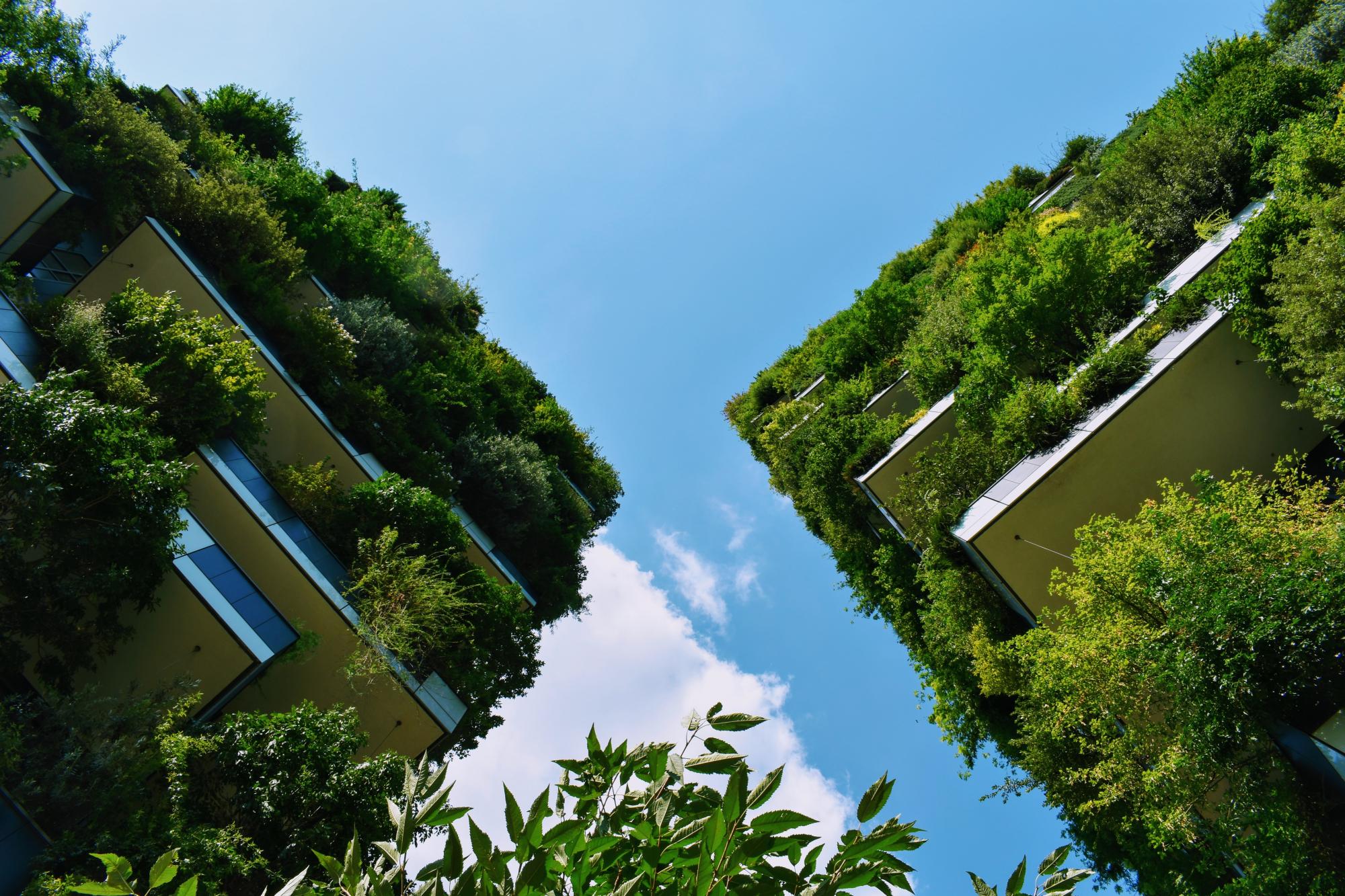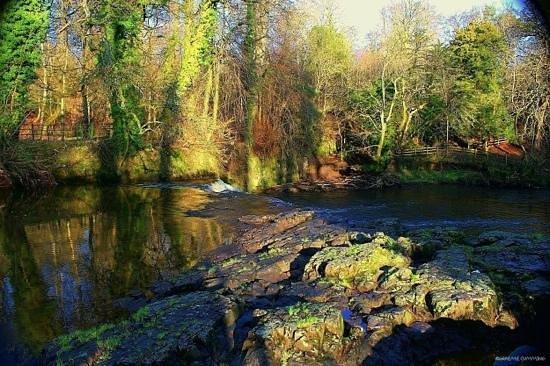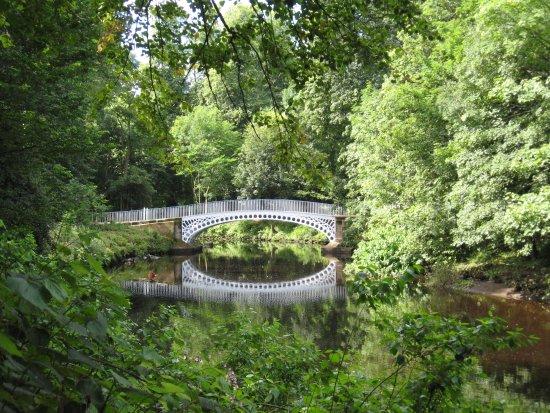The aim of the project was to protect and enhance the areas of core nature conservation interest and adopt environmental management principles to help reduce the impact of management operations on the environment. Linn park and Local Nature Reserve (LNR) is the second-largest park in the city. Linn Park comprises a mosaic of riparian woodland along the White Cart corridor principally broadleaf in character, mixed woodland plantation blocks connected by a series of mixed-species shelterbelts, scrub, meadow, amenity grassland, and parkland trees. The woodland provides habitat for a great variety and number of birds both resident and migratory. Some areas of the woodland have good ground flora diversity including the occurrence of Bluebells (Hyacinthoides non-scripta) in patches. The park is particularly of note for its floristic and bird diversity with some 250 and 60 species recorded respectively. Some animals and plants of interest include Atlantic Salmon (Salmo salar), Otter (Lutra lutra) and Kingfisher (Alcedo atthis) and Great-spotted Woodpecker (Dendrocopos major) and Toothwort (Lathraea squamaria) in the woodlands. It is scarce in Scotland and Linn Park and is one of only 3 sites in Glasgow this species is found (Ref 4). Linn Park and Local Nature Reserve (LNR) was awarded a Green Flag in 2013. The Green Flag Award is the benchmark national standard for quality parks and green spaces (Ref. 3).
Overview
Nature-based solution
- Parks and urban forests
- Large urban parks or forests
Key challenges
- Climate action for adaptation, resilience and mitigation (SDG 13)
- Climate change mitigation
- Green space, habitats and biodiversity (SDG 15)
- Habitat and biodiversity conservation
- Green space creation and/or management
- Environmental quality
- Air quality improvement
- Regeneration, land-use and urban development
- Promote natural styles of landscape design for urban development
- Health and well-being (SDG 3)
- Creation of opportunities for recreation
- Economic development and employment (SDG 8)
- Tourism support
- Cultural heritage and cultural diversity
- Protection of historic and cultural landscape/infrastructure
Focus
Project objectives
Implementation activities
Climate-focused activities
Climate change mitigation:
- Increase green urban nature for carbon storage (wetlands, tree cover)
- Improve carbon sequestration through selection of more adaptable species
- Invest in public transport/bicycle infrastructure as a means to prevent car use
Biodiversity conservation or restoration-focused activities
Biodiversity conservation:
- Protect and enhance urban habitats
- Preserve and strengthen existing habitats and ecosystems
- Protect species
- Undertake specific measures to protect species
- Means for conservation governance
- Raise public awareness
- Public engagement
Main beneficiaries
- Local government/Municipality
- Citizens or community groups
- Marginalized groups: People with functional diversities
Governance
Management set-up
- Government-led
Type of initiating organisation
- Local government/municipality
Participatory approaches/ community involvement
- Dissemination of information and education
- Citizen oversight (e.g. boards, advisory)
- Citizen monitoring and review
Details on the roles of the organisations involved in the project
Project implemented in response to ...
Financing
Total cost
Source(s) of funding
- Public national budget
- Public regional budget
- Public local authority budget
- Funds provided by non-governmental organization (NGO)
- Crowdfunding
- Other
Type of funding
- Earmarked public budget
- Direct funding (grants, subsidies, or self-financed projects by private entities)
- Other
Non-financial contribution
Impacts and Monitoring
Environmental impacts
- Environmental quality
- Improved air quality
- Green space and habitat
- Promotion of naturalistic styles of landscape design for urban development
- Increase in protected green space areas
- Reduced biodiversity loss
- Increased protection of threatened species
Economic impacts
- Unknown
- Other
Socio-cultural impacts
- Social justice and cohesion
- Improved access to urban green space
- Increased involvement of locals in the management of green spaces
- Health and wellbeing
- Gain in activities for recreation and exercise
- Cultural heritage and sense of place
- Increased awareness of flora and fauna as culturally and historically meaningful
- Education
- Increased knowledge of locals about local nature
- Increased awareness of NBS and their benefits
Type of reported impacts
Presence of formal monitoring system
Presence of indicators used in reporting
Presence of monitoring/ evaluation reports
Availability of a web-based monitoring tool
References
2. Linn Park. The Wikipedia, free Encyclopedia. Available at: Source link. Accessed on 27th July 2020.
3. Linn Park and Local Natural Reserve. Glasgow City Council. Available at: Source link . accessed on 27th July 2020.
4. Linn Park LNR. Friends of Glasgow’s Local Nature Reserves. Available at: Source link. Accessed on 27th July 2020.
5. Linn Park and Local Reserve Management Plan 2013-2018. Land and Environmental Services. Available at: Source link. Accessed on 27th July 2020.
6. Linn Park Adventure Playground. Glasgow Life. Available at: Source link. Accessed on 28th July, 2020.


